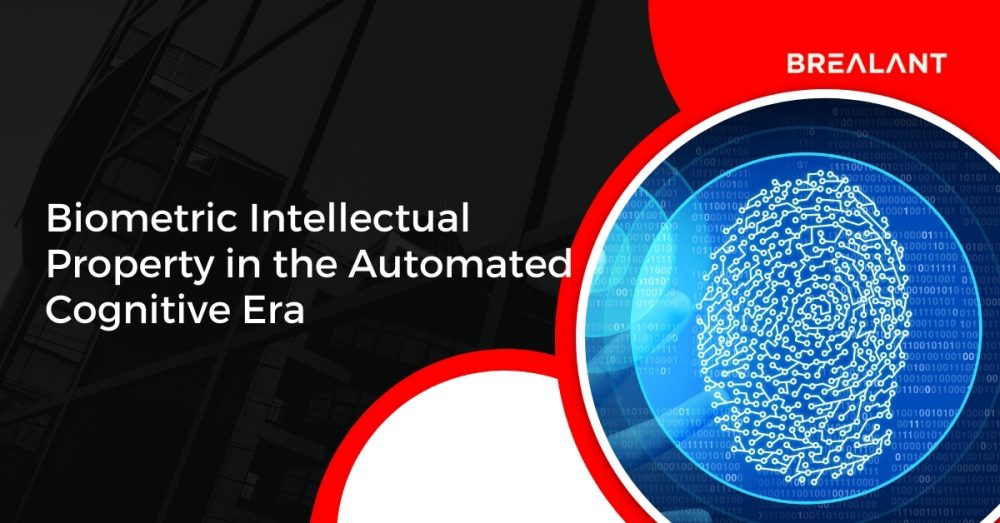The digital landscape is undergoing a metamorphosis. Passwords and PINs are fading, replaced by a new form of identification – our unique biological traits. This is the era of biometrics, and with it comes a surge in innovation and a complex web of intellectual property (IP) considerations.
Biometric data, encompassing fingerprints, iris scans, facial recognition, and even voice patterns, is integrated into everything from smartphones to border security systems. This “automated cognitive era” unlocks a world of convenience and enhanced security, but it also raises critical questions about privacy and ownership of this profoundly personal data.
The Rise of Biometric Technologies
The global biometric market is booming and is projected to reach a staggering $80 billion by the decade’s end. This growth is fueled by the increasing sophistication of biometric technologies and their diverse applications.
- Security Systems: Fingerprints and facial recognition revolutionize access control, offering a more secure and user-friendly alternative to traditional keycards.
- Financial Transactions: Biometric authentication for online payments and mobile wallets streamlines transactions and reduces fraud risks.
- Law Enforcement: Iris scans and facial recognition are employed for identification in criminal investigations and border control.
- Healthcare: Biometrics are finding applications in patient identification and monitoring vital signs.
These advancements are only possible with significant research and development. Companies invest heavily in creating, refining, and patenting their biometric technologies. This intellectual property protection is crucial for recouping investments and fostering further innovation.
Owning Your Identity: The Intellectual Property Landscape
Biometric data sits at a unique intersection between bodily autonomy and technological innovation. When it comes to IP, two primary areas emerge:
- IP Protection for Biometric Technologies: Companies that develop novel algorithms for fingerprint analysis, facial recognition software, or voice authentication systems can seek patent protection for their inventions. This incentivizes further R&D and fosters competition, leading to more robust and secure biometric solutions.
- Ownership of Biometric Data: This is a more contentious area. Who “owns” your fingerprint or facial data? Current legal frameworks vary, but some argue that individuals should have control over their biometric information and be able to decide its collection and usage.
Balancing Security and Privacy in a Data-Driven World
The rise of biometrics presents a problem: how to leverage its security benefits while safeguarding individual privacy. Here are some key considerations:
- Data Security: Biometric databases are a potential goldmine for hackers. Robust security measures and stringent regulations are essential to prevent unauthorized access and misuse of this sensitive information.
- Data Consent: Individuals should have explicit and informed consent to collect, store, and use their biometric data. They should be able to opt in or out of biometric identification systems.
- Data Bias: Biometric algorithms can be susceptible to bias, leading to discriminatory outcomes. Rigorous testing and development are crucial to ensure fairness and inclusivity in biometric systems.
- Regulation and Transparency: Governments must develop adaptable legal frameworks that keep pace with the evolving biometrics landscape. Clear guidelines regarding data collection, storage, and access are crucial.
The Future of Biometric IP: Collaboration and Ethical Considerations
The future of biometric intellectual property hinges on collaboration between technology developers, policymakers, and the public. Here are some critical areas for focus:
- Standardization: Standardizing biometric data formats and collection methods can facilitate interoperability between different systems, promoting a more secure and efficient ecosystem.
- Ethical AI Development: The development of biometric technologies needs to be grounded in ethical principles. Transparency in algorithms and responsible data governance are crucial.
- Public Education: Raising public awareness about biometrics, its benefits, and risks and fostering a culture of informed consent is vital for building trust in these technologies.
Biometric intellectual property has the potential to unlock a new era of personalized security and convenience. However, navigating the ethical and legal complexities is crucial for ensuring responsible development and protecting individual privacy. Through collaborative efforts, we can leverage the power of biometrics to build a future that is both secure and respectful of human autonomy.
The Evolving Threat Landscape
Once compromised, biometric data cannot be easily changed, unlike a password. This makes robust security measures paramount. Companies and governments need to invest in cutting-edge cybersecurity solutions to protect against sophisticated attacks. Additionally, exploring alternative authentication methods like behavioral biometrics (analyzing typing patterns or gait) could mitigate the risk associated with static biometric data.
The Decentralized Future
The rise of blockchain technology presents an intriguing possibility for managing biometric data. Decentralized storage could give individuals more control over their information, allowing them to grant access to specific entities for specific purposes. However, significant technical and legal challenges must be addressed before this vision becomes a reality.
The Human Factor
Biometrics are powerful tools, but they should only partially replace human judgment. Security protocols should incorporate a layered approach, combining biometrics with other authentication methods and human oversight. This is particularly important in high-security scenarios like border control or financial transactions.
Conclusion
Biometric intellectual property stands at a crossroads. On one hand, it fuels innovation and unlocks a world of possibilities. On the other hand, it raises critical questions about privacy, security, and potential misuse. The future of biometrics hinges on our ability to address these concerns proactively. Through collaboration between technology developers, policymakers, and the public, we can build a framework that fosters responsible development, safeguards individual privacy, and harnesses the power of biometrics for good.
By prioritizing ethical considerations, fostering transparency, and empowering individuals with control over their data, we can usher in an era where biometric technologies augment our lives without compromising our fundamental rights. The journey towards a secure and privacy-conscious biometric future requires vigilance, continuous dialogue, and a commitment to responsible innovation.

